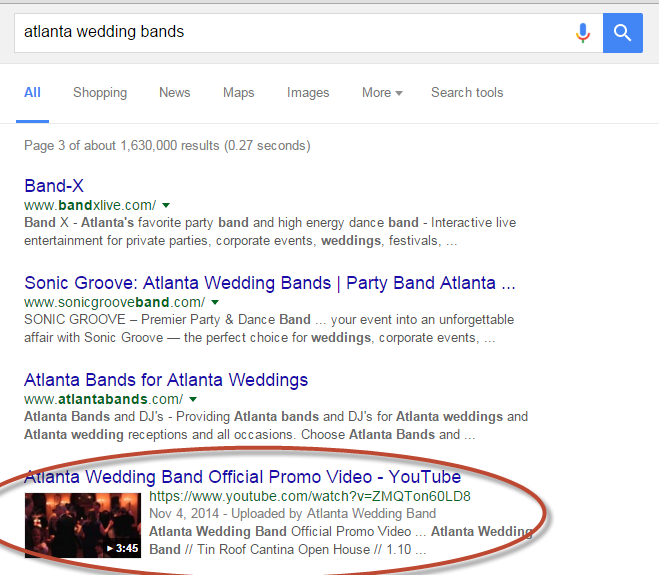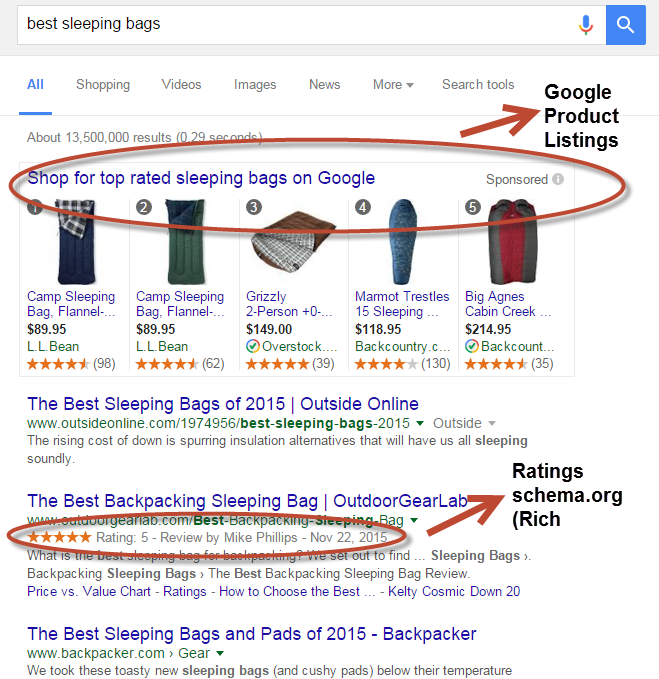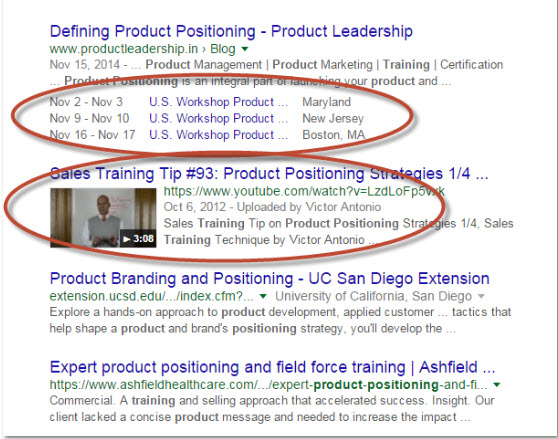Several years ago, in the frenetic search engine optimization heyday, SEO professionals would do manual Google ranking checks and report on those weekly to their executives or agency clients. Meaning, they would either run a tool, or manually google the core 10-20 keywords, and would report on what spot the target URL was in.
While this inherently doesn’t sound harmful, it has become outdated for a couple reasons:
- It’s shortsighted to focus ONLY a handful of terms, and it doesn’t capture valuable long-tail keywords you may be ranking for and that are converting well but are not reported on.
- Aforementioned executives and clients can become obsessed and highly dependent on them.
- Personalized search means that nobody’s SERPS are identical. Search results are tailored to each individual’s specific interests, browser history, geographic location, etc.
- Ranking no longer equals SEO success, nor guaranteed traffic. There is a LOT going on in the SERPS today, which can affect CTR (click through rate), traffic, and conversions. So ranking alone is only part of the goal, not THE goal itself any longer. (And in the past year, with rampant referral spam, even traffic counts can cause discrepancies with what’s really going on)
That last point leads us to the topic for today: the SERPS landscape.
SERPS Checking to Stay on Top of SEO Trends in Your Industry
Ranking reports are so 2010. But do you know what is so 2016?
SERPS checking.
AKA going to Google, typing in your keyword, and seeing what’s on the page.
And by the way, googling their keywords is a pretty typical reason in-house marketers hire us: either they or their executives are not pleased with the competitors who are outranking them, and finally once what was just a thorn in their side has become a pain in their rear.
Now I probably don’t have to tell you to stop what you’re doing, go to an incognito browser, and type in your most profitable keyword. If you’re like most, you actually check your keyword ranking too often and know exactly who those pesky competitors are who outrank you.
But are you SERPS checking not to look solely at your competition, but with the lens of opportunity and trend spotting?
If your SEO has grown stagnant, this can be a good place to help you determine where you go next and how to one-up your efforts. Besides giving you new ideas for your business and your site, SERPS checking will also allow you to stay on top of trends. Understanding in recent years that social channels are search engines, that tweets are now showing up in the SERPs (especially for brand terms) that there is more competing for user clicks then there used to be, and that consumer search patterns have shifted, this is important to revisit at least on a monthly basis.
While this is nothing new per se, I talk to people every day who aren’t sure what to do next after passive foundational SEO has been put in place.
SERPS Examples Across Industries and Keywords
Here are insights and screenshots on 6 keywords and their respective SERPS listings I’ve seen recently:
- “Atlanta Wedding Bands” – YouTube is on page 3 and there was only one listing, which means lots of opportunities here to capitalize on more videos, and certainly better YouTube optimization. While you’re playing the waiting game for your site to rank and doing all you can, at least you can double your efforts and get YouTube videos to rank, potentially quicker than your site will.

- “SEO Consultant” – ratings schema.org rich snippets, and a good idea to explore for mature business blogs in a competitive niche. These rich snippets have proven conversions to draw the eye, and thus the click.

- For many “national” terms without a geographic focus, I see local listings come up. Are you noticing the same thing? This is Google determining user intent, and they have determined that the term “wheelchair” must be someone intending to buy a product. You’ll notice PLAs (Product Listing Ads), as well as the local snack pack.

- “Best sleeping bags” – Google Product Listing Ads again, and ratings rich snippets. While PLAs have been around for awhile, a recent survey showed that SMBs are getting in more on digital media initiatives not because of ROI, but to keep up with competition.

- “Product positioning training” – YouTube and event rich snippets on page 1.
- “Teething necklaces” – images are ripe with opportunity for ecommerce, not to mention how a lot of consumers shop for products these days, so make sure to optimize (and compress!) images as many people shop and purchase by looking at Google Images. Uploading the keyword in your file name, and adding alt text, is important for every industry, not to mention bonus points with on-page optimization.

And lastly, 3 foundational SEO 101 SERPS opportunities to improve your listing:
- Title tag and meta description – most people are satisfied by just getting a keyword stuck in here. But if you’re only considering the keyword, you’d be missing out! Scrutinize your listing to see if these are as conversion oriented as possible in order to draw the eye and convert clicks to your site versus the competitor above or below you? This is not only SEO 101 and conversion 101, it’s next-level marketing translated through SEO: SEO copywriting 201, brand self-awareness and target market awareness 201.
- URL – is the “right” URL ranking? Here’s what I mean by that: except for in an extremely rare set of instances, Google is only going to rank ONE page of your website for a given keyword. This is why if you try and rank multiple pages for the same keyword you’ll be cannibalizing your efforts, resulting in missed opportunities.
- Google Suggest and “searched related to” – the keywords that you see come up in the search bar as you start typing in keywords as well as at the bottom of the SERPS page, typically show frequently searched terms. Pay attention to your keyword synonyms and longtail opportunities and make sure you have content that targets these terms too either on your page as synonyms or on a different page or post.
Your Thoughts?
Do you think much about the SERPS for your core keywords? Placing yourselves in the shoes of your target traffic and searchers? Have you seen anything interesting in the SERPS for your keywords? Chime in below!
Jenny Munn
Latest posts by Jenny Munn (see all)
- Four 2024 SEO Planning Tips for World Domination - November 16, 2023
- SEO Planning Tip: Why You Need a CYA Clause - November 3, 2023
- How Long Does SEO Take to Show Results? (Updated for 2023) - August 9, 2023



